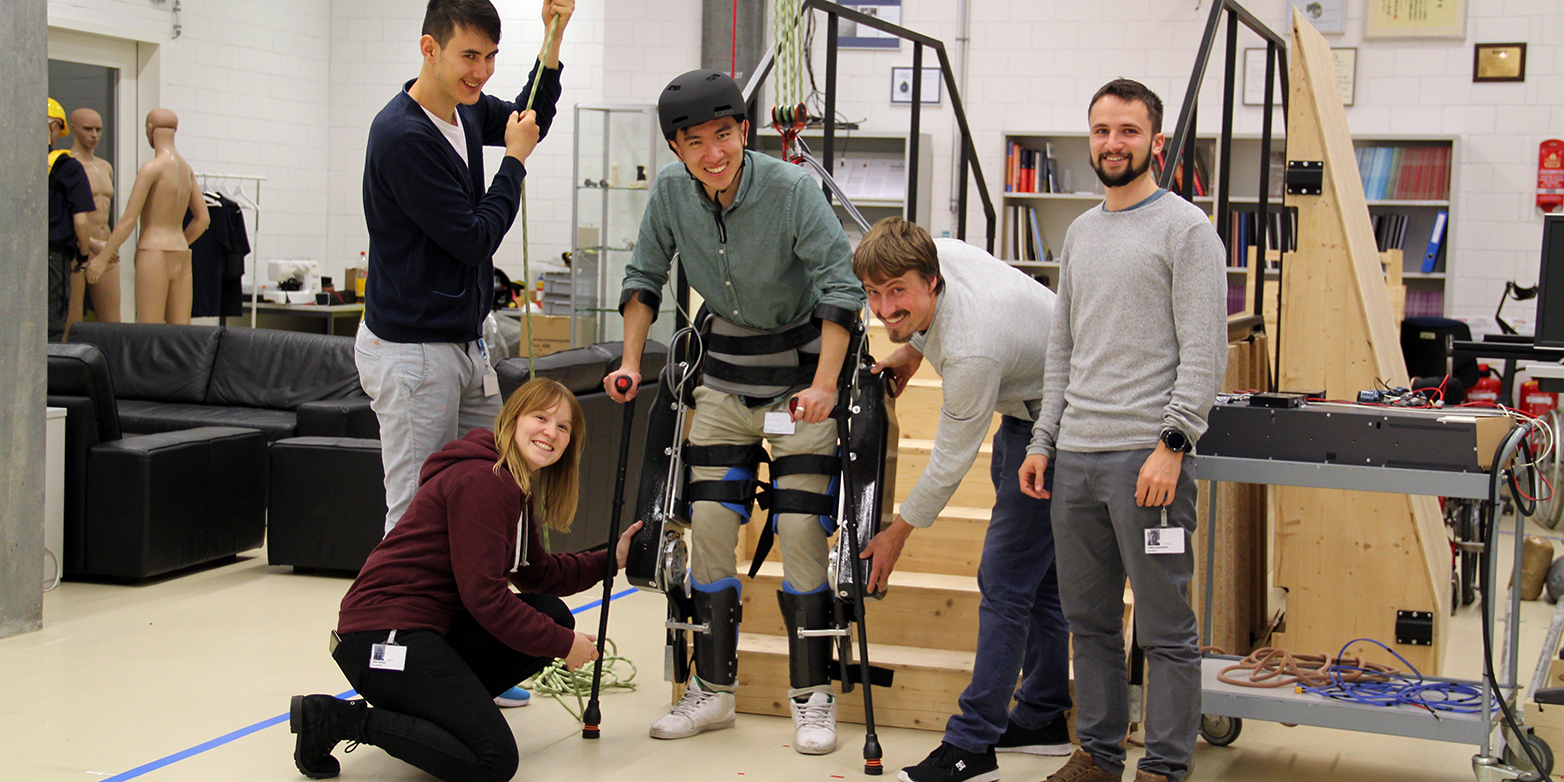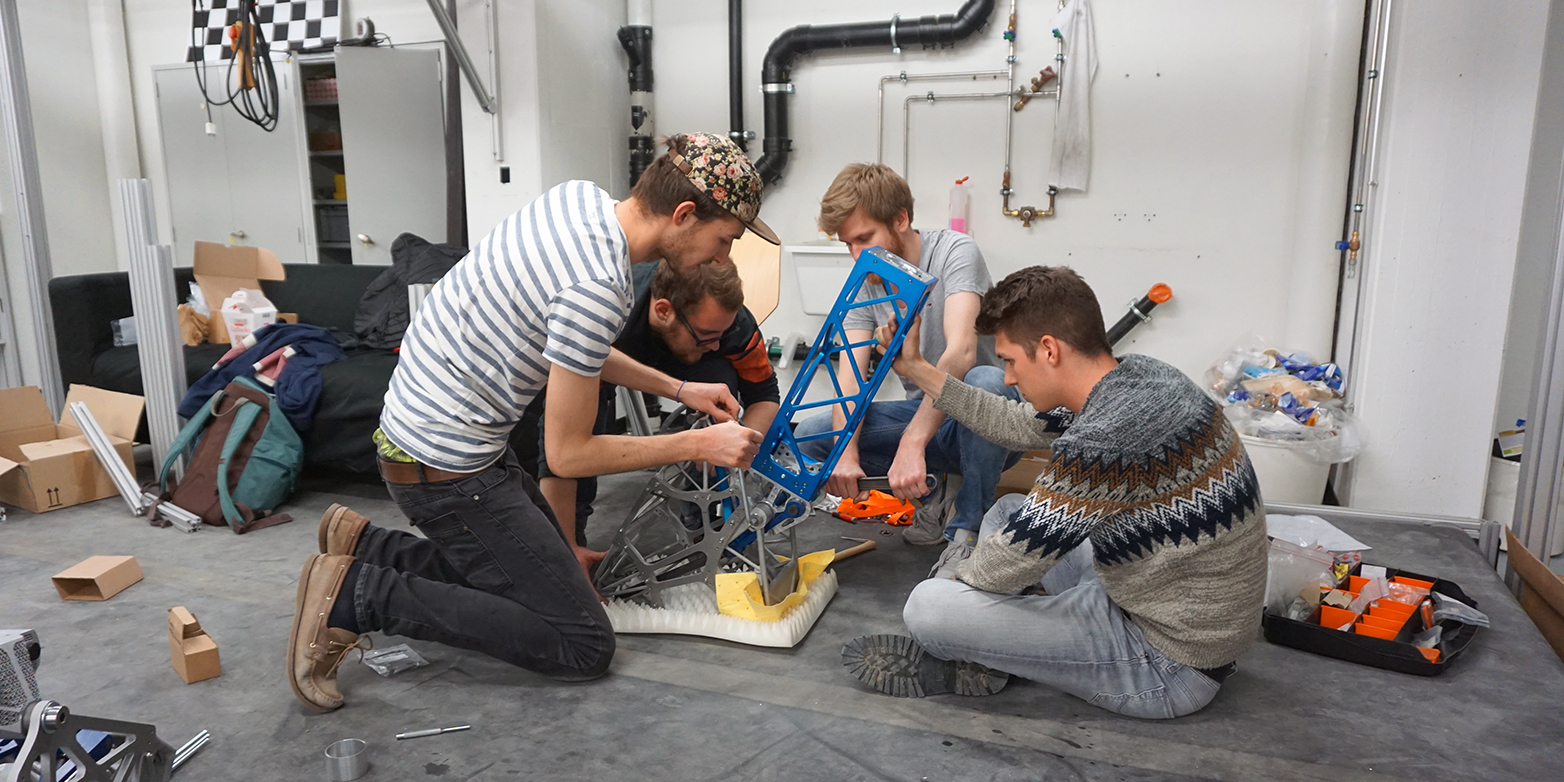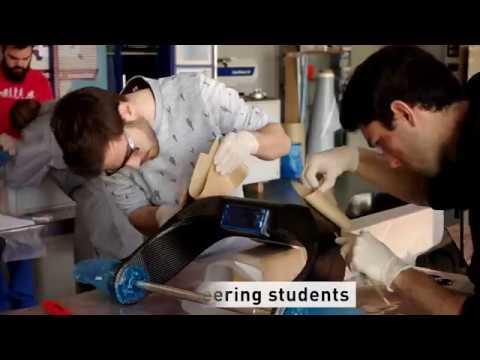University projects for real world
Whether building an exoskeleton for paraplegics or an autonomous construction robot, the Focus projects are a chance for mechanical engineering students to solve a complex technical challenge. Besides acquiring new knowledge, they also gain soft skills and practise teamwork and work organisation.

“As soon as the project was presented, I knew it was the one for me,” says Shuaixin Qi. Since September 2018, the sixth-semester mechanical engineering student has been working alongside 14 other students to build a motorised exoskeleton that enables paraplegics walk. Qi is particularly thrilled to use his expertise to help people.
The project, called external pageVariLeg enhancedcall_made, is one of the Focus projects that are offered to students in their fifth and sixth semesters by the Department of Mechanical and Process Engineering (D-MAVT). Anyone interested in participating has to apply. The projects are also open to students in the Department of Information Technology and Electrical Engineering (D-ITET) as well as those at a few other universities. Varileg enhanced is a joint project of ETH Zurich and HSR Rapperswil.
Focus projects demand a huge amount of time and effort. Students are presented with a complex technical challenge and are asked to develop a solution – with support from coaches and professors – in the space of just a few months. But the participants believe their efforts are worth it. Qi sums up what drives them: “We can gather practical experience for later on here in the sheltered university environment.”
Helping others
Qi’s colleague Michael Heid knew back when he started his mechanical engineering studies that an opportunity to work on a Focus project was not one he could pass up. Like Qi, of the seven projects to choose from, VariLeg enhanced appealed to him the most because of its social aspect. “It’s not just about building a robot or an even more efficient motor; with our project, we can help make a real difference to people’s lives,” he explains. The topic is of course intellectually interesting to him, but there is also a personal dimension as he has had to witness how accidents left several of his friends in wheelchairs.
This project represents the third generation of VariLeg. The first was also developed by a Focus team, back in 2014. Another student team designed VariLeg 2 for the ETH Zurich CYBATHLON in 2016. “Our goal is to further refine the exoskeleton so that we can enter it into the next CYBATHLON in 2020,” Qi explains.
Carbon makes it lighter
One major improvement the team made was to switch the majority of the components over to carbon in an attempt to make the exoskeleton lighter. They also designed each knee and hip joint to be controlled separately. “We are completely rewriting the programming,” Qi adds. Whereas the previous models relied on software developed by the team, this year’s group opted for an open-source solution. This solution is continuously refined by experts and has the advantage that it is always up to date.
Technology is not the only challenge facing the team, made up of 12 ETH students in mechanical engineering, electrical engineering and health sciences as well as 3 students from the HSR Rapperswil University of Applied Sciences. The group had to learn to operate as a team and develop their own workflows and organisational structures. In addition, taking decisions on their own was a new experience; up to this point, their studies had consisted primarily of carrying out assigned tasks with a clear path to the solution. For example, when the project began, Qi had hoped to find a standard solution for each of the various development steps. In the meantime, however, he and his teammates have learned that there is no such thing as a “standard” solution, and that regardless of how well they plan, nothing ever turns out quite as they expected.

A robot for building a habitat on the moon
The team working on the CHIRON Focus project had much the same experience while developing their autonomous construction robot. Their machine’s two-metre-long arm comes equipped with a complex tool-changing system so that it can operate all kinds of devices from pincers to chainsaws. Ultimately, they hope the construction robot will be deployed in inhospitable environments like the moon.
The team consists of eight mechanical engineering students, two electrical engineering students, and three from the ZHAW Zurich University of Applied Sciences. Hydraulics, materials, battery, programming – the team chose and created everything they needed themselves. Just as the VariLeg project team did, the CHIRON students split into smaller groups, communicating with each other via the Slack teams chat service. They found their most daunting task to be the search for sponsors. “To prepare for that, we talked to people who worked on previous Focus projects,” says mechanical engineering student Flavio Regenass.
For the CHIRON team, the highlight will be the external pageIGLUNAcall_made field campaign this June. At the event organised by the ESA Lab initiative, students from all across Europe come together to present their projects for a moon habitat. “Our robot still needs quite a bit of work before it can go build something on the moon,” team member Peter Zhang admits.
Other Focus projects in 2018–2019
Adero
Autonomous robots that can deliver goods in indoor environments
Cardex
Simulator for surgeons to practise minimally invasive cardiac procedures
Dipper
Winged aircraft capable of diving into and manoeuvring under water
external pageFormula Student Electriccall_made
Mythen, a compact and ultra-light electric racing car
external pageFterocall_made
Mobile wind energy system consisting of a carbon aircraft tethered to a generator by a cable

